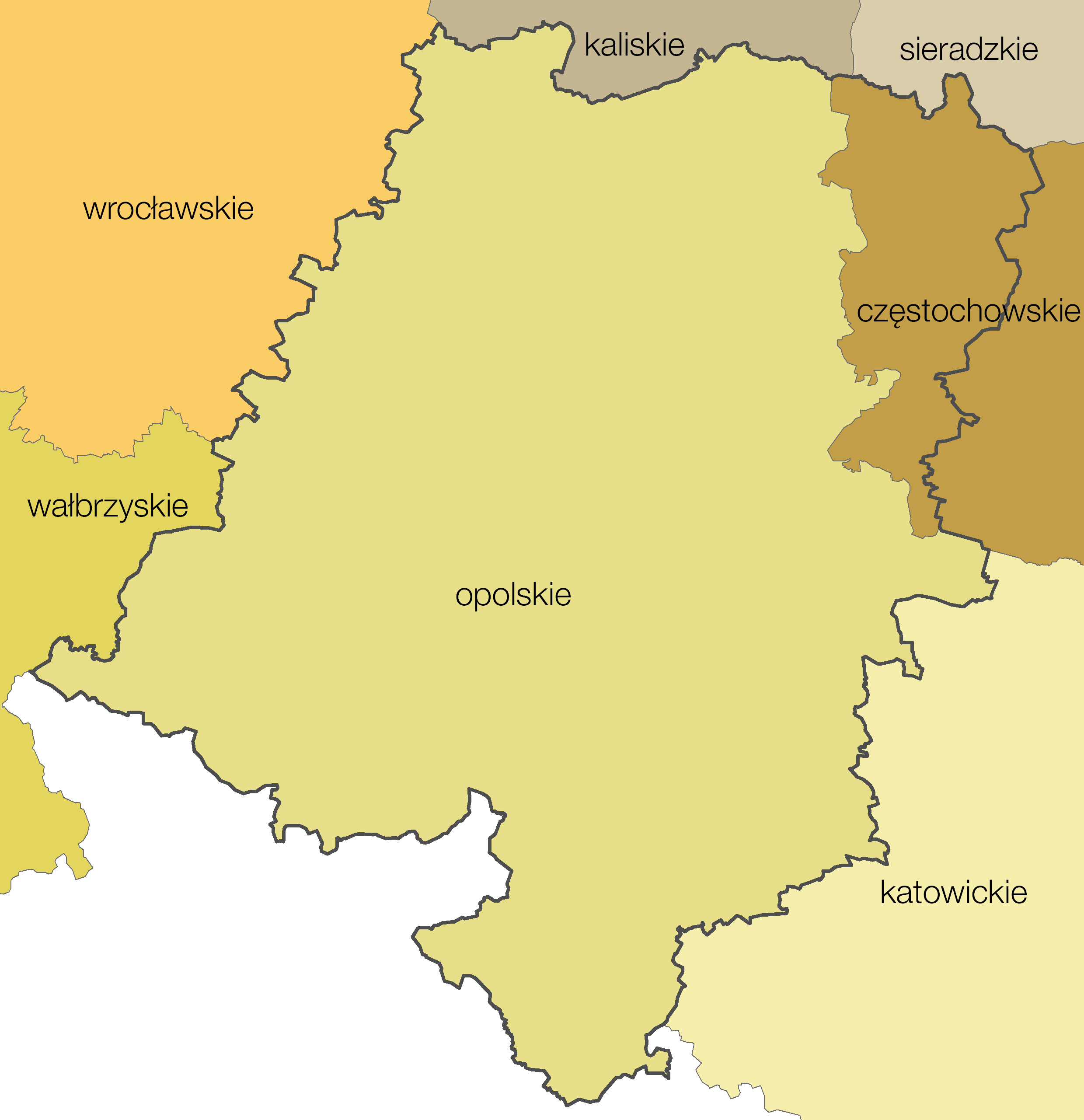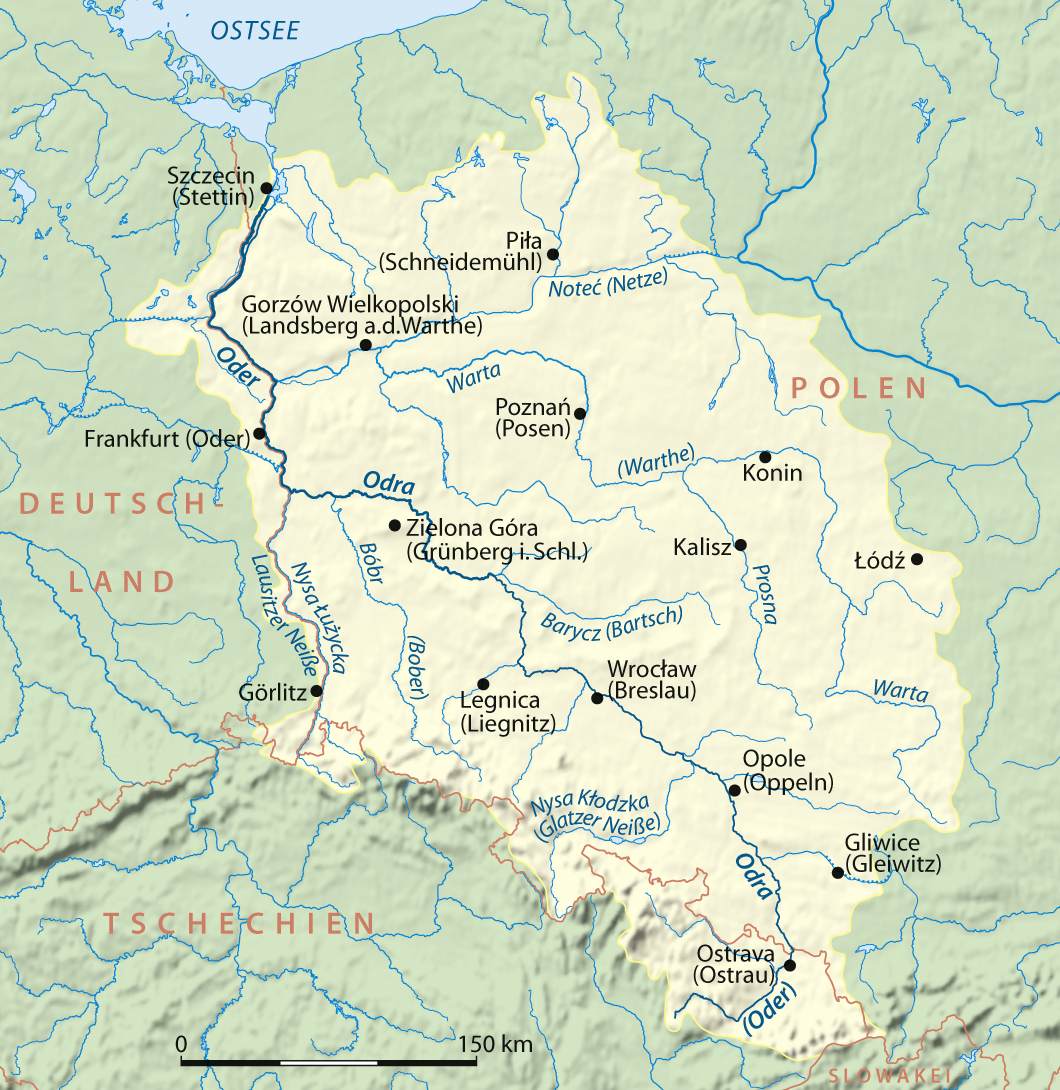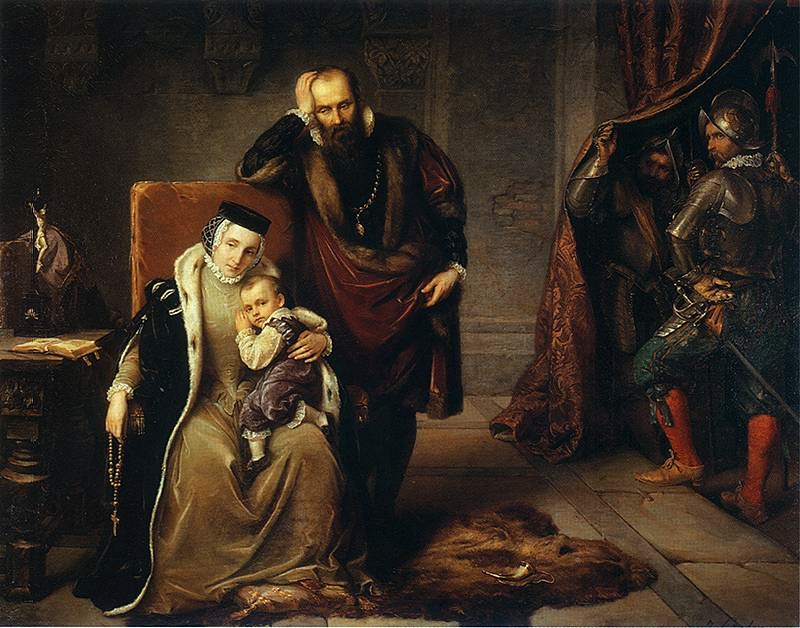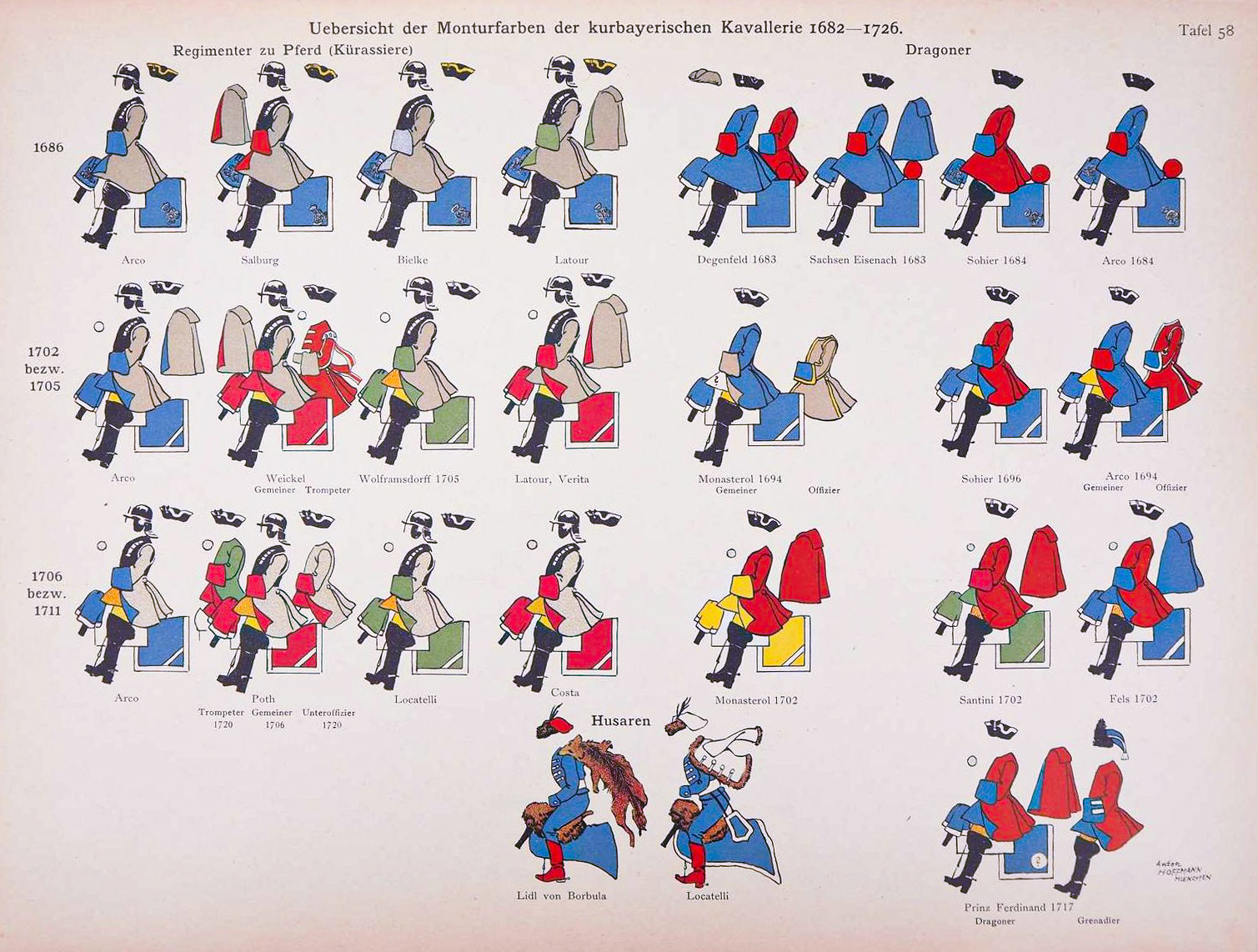|
Koźle
Koźle () is a district of Kędzierzyn-Koźle, Poland, located in the western part of the city at the junction of the Kłodnica and Oder rivers, km southeast of Opole. The district has a Roman Catholic church, a medieval chateau, remains of a 19th-century fortress and a high school. Koźle's industries include a shipyard and an inland port. History The settlement was first mentioned in the early 12th-century '' Gesta principum Polonorum'', the oldest Polish chronicle. Its name comes from the Polish word ''kozioł'', which means "goat". As a result of the fragmentation of Poland, from 1281 to 1355 Koźle was the seat of a splinter eponymous duchy ruled by a local branch of the Piast dynasty. Also in 1281, Koźle obtained town rights. After 1355, it remained under the rule of other branches of the Polish Piast dynasty until 1532, when it was absorbed to Bohemia. In 1431, Duke Konrad VII the White founded a Monastery of the Order of Friars Minor in Koźle. It was besieged sever ... [...More Info...] [...Related Items...] OR: [Wikipedia] [Google] [Baidu] |
Kędzierzyn-Koźle
Kędzierzyn-Koźle () is a city in south-western Poland, the administrative center of Kędzierzyn-Koźle County. With 58,899 inhabitants as of 2021, it is the second most-populous city in the Opole Voivodeship. Founded from the merger of the previously separate towns of Kędzierzyn and Koźle, both dating back to the Middle Ages, the city is a major river port and center of chemical industry, and is particularly known for ZAKSA Kędzierzyn-Koźle, one of the top volleyball clubs in Europe in the 2020s. Geography and economy Kędzierzyn-Koźle is located in the historic Silesia (Upper Silesia) region at the confluence of the Oder River and its Kłodnica tributary. Situated on the lower reaches of the Gliwice Canal, it is a place of a major river port, has rail connections with all major cities of Poland and lies close to the west of the Metropolis GZM. The town is a major location of chemical industry, the site of several factories and a power plant at Blachownia Śląska. Zakłady ... [...More Info...] [...Related Items...] OR: [Wikipedia] [Google] [Baidu] |
Kędzierzyn-Koźle County
__NOTOC__ Kędzierzyn-Koźle County () is a unit of territorial administration and local government (powiat) in Opole Voivodeship, south-western Poland. It came into being on January 1, 1999, as a result of the Polish local government reforms passed in 1998. Its administrative seat and only town is Kędzierzyn-Koźle, which lies south-east of the regional capital Opole. The county covers an area of . As of 2019 its total population is 94,135, out of which the population of Kędzierzyn-Koźle is 60,852 and the rural population is 33,283. Neighbouring counties Kędzierzyn-Koźle County is bordered by Strzelce County to the north, Gliwice County to the east, Racibórz County to the south, Głubczyce County and Prudnik County to the west, and Krapkowice County to the north-west. Administrative division The county is subdivided into six gmina The gmina (Polish: , plural ''gminy'' ) is the basic unit of the administrative division of Poland, similar to a municipality. , there w ... [...More Info...] [...Related Items...] OR: [Wikipedia] [Google] [Baidu] |
Opole Voivodeship
Opole Voivodeship ( , , ), is the smallest and least populated voivodeships of Poland, voivodeship (province) of Poland. The province's name derives from that of the region's capital and largest city, Opole. It is part of Silesia. A relatively large Germans, German minority lives in the voivodeship, and the German language is co-official in 28 communes. Opole Voivodeship is bordered by Lower Silesian Voivodeship to the west, Greater Poland Voivodeship, Greater Poland and Łódź Voivodeships to the north, Silesian Voivodeship to the east, and the Czech Republic (Olomouc Region and Moravian-Silesian Region) to the south. Opole Province's geographic location, economic potential, and its population's level of education make it an attractive business partner for other Polish regions (especially Lower Silesian Voivodeship, Lower Silesian and Silesian Voivodeships) and for foreign investors. Formed in 1997, the Euroregion Praděd, Praděd/Pradziad Euroregion with its headquarter in Prud ... [...More Info...] [...Related Items...] OR: [Wikipedia] [Google] [Baidu] |
Konrad VII The White
Konrad VII the White (aft. 1396 – 14 February 1452) was a Duke of Oels / Oleśnica, Koźle, half of Bytom and half of Ścinawa during 1416–1427 (with his brothers as co-rulers), sole Duke of Koźle and half of Bytom during 1427–1450, Duke of Oleśnica during 1421–1450 (until 1439 with his brother as co-ruler) and sole Duke of half of Ścinawa during 1447–1450. He was the fourth son of Konrad III the Old, Duke of Oleśnica, by his wife Judith. Like his three older and one younger brothers, at the baptism he received the name of Konrad, which was characteristic in this branch of the House of Piast. Life At a young age, he fought in the famous Battle of Grunwald (1410) on the side of the Teutonic Order and was taken captive by the Polish, but was soon released. Konrad VII began his rule over the family lands only in 1416, when all his brother (including him) attained his majority. The older brother, Konrad IV renounced in favor of his brothers the government over the Du ... [...More Info...] [...Related Items...] OR: [Wikipedia] [Google] [Baidu] |
Kłodnica
The Kłodnica is a river in the Upper Silesia region. It is about 75 km long and a right tributary of the Odra river. Along Kłodnica's shore are Polish cities of Katowice, Kędzierzyn-Koźle, Ruda Śląska, Gliwice, and Zabrze Zabrze (; German: 1915–1945: , full form: , , ) is an industrial city put under direct government rule in Silesia in southern Poland, near Katowice. It lies in the western part of the Metropolis GZM, a metropolis with a population of around 2 m .... There was also a Kłodnica Canal that opened in 1806. This water transport facility has been replaced by the Gliwice Canal. Rivers of Poland Rivers of Silesian Voivodeship {{Poland-river-stub ... [...More Info...] [...Related Items...] OR: [Wikipedia] [Google] [Baidu] |
Oder
The Oder ( ; Czech and ) is a river in Central Europe. It is Poland's second-longest river and third-longest within its borders after the Vistula and its largest tributary the Warta. The Oder rises in the Czech Republic and flows through western Poland, later forming of the border between Poland and Germany as part of the Oder–Neisse line. The river ultimately flows into the Szczecin Lagoon north of Szczecin and then into three branches (the Dziwna, Świna and Peene) that empty into the Bay of Pomerania of the Baltic Sea. Names The Oder is known by several names in different languages, but the modern ones are very similar: English and ; Czech, Polish, and , ; (); ; Medieval Latin: ''Od(d)era''; Renaissance Latin: ''Viadrus'' (invented in 1534). The origin of this name is said by onomastician Jürgen Udolph to come from the Illyrian word ''*Adra'' (“water vein”). Ptolemy knew the modern Oder as the Συήβος (''Suebos''; Latin ''Suevus''), a name apparen ... [...More Info...] [...Related Items...] OR: [Wikipedia] [Google] [Baidu] |
Third Silesian Uprising
The Silesian Uprisings (; ; ) were a series of three uprisings from August 1919 to July 1921 in Upper Silesia, which was part of the Weimar Republic at the time. Ethnic Polish and Polish-Silesian insurrectionists, seeking to have the area transferred to the newly founded Polish Republic, fought German police and paramilitary forces which sought to keep the area part of the new German state founded after World War I and the subsequent revolutions in Germany. Following the conflict, the area was divided between the two countries. The rebellions have subsequently been commemorated in modern Poland as an example of Polish nationalism. Despite central government involvement in the conflict, Polish historiography renders the events as uprisings reflecting the will of ordinary Upper Silesians rather than a war. In total, several thousand people may have died violently in the militant clashes in Upper Silesia between 1919 and 1921. About four fifths of the victims were killed during ... [...More Info...] [...Related Items...] OR: [Wikipedia] [Google] [Baidu] |
German Empire
The German Empire (),; ; World Book, Inc. ''The World Book dictionary, Volume 1''. World Book, Inc., 2003. p. 572. States that Deutsches Reich translates as "German Realm" and was a former official name of Germany. also referred to as Imperial Germany, the Second Reich or simply Germany, was the period of the German Reich; . from the unification of Germany in 1871 until the German revolution of 1918–1919, November Revolution in 1918, when the German Reich changed its form of government from a monarchy to a Weimar Republic, republic. The German Empire consisted of States of the German Empire, 25 states, each with its own nobility: four constituent Monarchy, kingdoms, six Grand duchy, grand duchies, five Duchy, duchies (six before 1876), seven Principality, principalities, three Free imperial city, free Hanseatic League, Hanseatic City-state, cities, and Alsace–Lorraine, one imperial territory. While Prussia was one of four kingdoms in the realm, it contained about two-thirds ... [...More Info...] [...Related Items...] OR: [Wikipedia] [Google] [Baidu] |
Interbellum
In the history of the 20th century, the interwar period, also known as the interbellum (), lasted from 11 November 1918 to 1 September 1939 (20 years, 9 months, 21 days) – from the end of World War I (WWI) to the beginning of World War II (WWII). It was relatively short, yet featured many social, political, military, and economic changes throughout the world. Petroleum-based energy production and associated mechanisation led to the prosperous Roaring Twenties, a time of social and economic mobility for the middle class. Automobiles, electric lighting, radio, and more became common among populations in the first world. The era's indulgences were followed by the Great Depression, an unprecedented worldwide economic downturn that severely damaged many of the world's largest economies. Politically, the era coincided with the rise of communism, starting in Russia with the October Revolution and Russian Civil War, at the end of WWI, and ended with the rise of fascism, particularly ... [...More Info...] [...Related Items...] OR: [Wikipedia] [Google] [Baidu] |
House Of Vasa
The House of Vasa or Wasa was a Dynasty, royal house that was founded in 1523 in Sweden. Its members ruled the Kingdom of Sweden from 1523 to 1654 and the Polish–Lithuanian Commonwealth from 1587 to 1668. Its agnatic line became extinct with the death of King John II Casimir Vasa in 1672. The Vasa dynasty descended from a 14th-century Swedish noble family, tracing agnatic kinship to Nils Kettilsson (Vasa) (), the of Tre Kronor (castle), ''Tre Kronor'' Castle in Stockholm. Several members held high offices during the 15th century. In 1523, after the Stockholm Bloodbath, Stockholm bloodbath and the abolition of the Kalmar Union, Gustav Eriksson (Vasa) became King Gustav I of Sweden and the royal house was founded. His reign is sometimes referred to as the beginning of the modern Swedish state, which included the King's break with the Catholic Church during the Protestant Reformation and the foundation of the Church of Sweden. However, his eldest son and successor Erik XIV of Sw ... [...More Info...] [...Related Items...] OR: [Wikipedia] [Google] [Baidu] |
First French Empire
The First French Empire or French Empire (; ), also known as Napoleonic France, was the empire ruled by Napoleon Bonaparte, who established French hegemony over much of continental Europe at the beginning of the 19th century. It lasted from 18 May 1804 to 6 April 1814 and again briefly from 20 March 1815 to 7 July 1815, when Napoleon was exiled to Saint Helena. Although France had already established a French colonial empire, colonial empire overseas since the early 17th century, the French state had remained a France in the early modern period, kingdom under the Bourbons and a French First Republic, republic after the French Revolution. Historians refer to Napoleon's regime as the ''First Empire'' to distinguish it from the restorationist ''Second French Empire, Second Empire'' (1852–1870) ruled by his nephew Napoleon III. On 18 May 1804 (28 Floréal year XII on the French Republican calendar), Napoleon was granted the title Emperor of the French (, ) by the French and w ... [...More Info...] [...Related Items...] OR: [Wikipedia] [Google] [Baidu] |
Bavarian Army
The Bavarian Army () was the army of the Electorate of Bavaria, Electorate (1682–1806) and then Kingdom of Bavaria, Kingdom (1806–1918) of Bavaria. It existed from 1682 as the standing army of Bavaria until the merger of the military sovereignty () of Bavaria into that of the German State in 1919. The Bavarian Army was never comparable to the armies of the Great Powers of the 19th century, but it did provide the Wittelsbach dynasty with sufficient scope of action, in the context of effective alliance politics, to transform Bavaria from a territorially-disjointed small state to the second-largest state of the German Empire after Prussia. History 1682–1790: From the first standing army to the Napoleonic Wars The of 1681 obliged Bavaria to provide troops for the Army of the Holy Roman Empire, Imperial army. Moreover, the establishment of a standing army was increasingly seen as a sign of nation state, nation-statehood. At a field camp in Schwabing on 12 October 1682, the ... [...More Info...] [...Related Items...] OR: [Wikipedia] [Google] [Baidu] |






